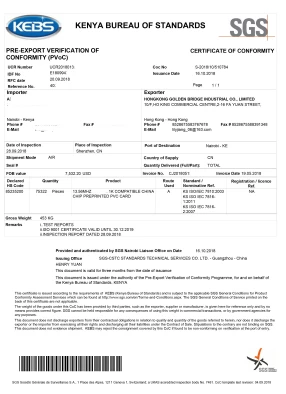An RFID solution for automatic distribution of medical sterile gloves
In daily work, nitrile gloves are one of the most commonly used tools for medical staff to ensure that they treat patients without spreading infections.
According to a report from Texas Medical Technology, COVID-19 has put new pressure on the systems that access and use these gloves, which has prompted medical companies to seek a more automated, safer, and more economical system. Money solution.
Therefore, the company uses RFID technology to establish an automated nitrile glove dispenser system, which ensures that users do not need to touch anything, and automatically recognize gloves of the right size and wear them on the user's hand.
According to Ricardo Espejel, the chief technology officer of the company’s Mexican branch iNitrile, the system is called iNitrile and consists of a dispenser. The user can put his hand in and the machine will Help them put on gloves, and the RFID reader located at the front of the machine will ask them for their RFID card.
The iNitrile division employs seven engineers to develop solutions for aerospace, automotive and IT applications, and provides medical supplies for hospitals in Mexico and the United States, including surgical gowns, masks, gloves and safety kits. And it mainly produces equipment and small accessories for the medical industry, such as disinfection stations and disinfection drone SaniDrone UAV that sprays disinfection spray for stadium stands and other places.

According to the company, hospital employees must disinfect the gloves before touching them, and not touch anything outside of the gloves. Espejel said: “When someone wears gloves, there is often some extra contact. Doctors or nurses may accidentally take more gloves, and the extra gloves will not be usable because this contact may make them unusable. Infected.” According to the company’s statistics, this leads to as much as 30% of the glove wastage.
The company's CEO Omri Shafran (Omri Shafran) recalled that in June 2020, the company found that it needed a technical solution to ensure the use of sterile gloves. Therefore, engineers have developed an automatic glove dispenser to reduce the risk of infection transmission and reduce glove waste. The team prototyped, tested, and manufactured the solution in approximately 90 days. Finally, this iNitrile machine was born, and it is planned to be put into mass production in June this year.
As far as the medical industry is concerned, the need for quick solutions is the biggest challenge currently facing. Due to the large number of COVID-19 patients, which continues to put pressure on medical staff, hospitals urgently need solutions. The company tested automatic teller machines, food dispensers, beverage dispensers and automatic packaging machines, and found that no other dispenser can directly put gloves on the user's hand in a contactless manner.
Espejel said: “We brainstormed and finally put all our ideas into practice on the iNitrile machine.” In order to ensure that products can be developed, prototyped, tested and manufactured in just a few months, the company adopted 3D printing model. This design requires certain skills to ensure that users can continue to use one of the three sizes of gloves and allow them to wear them at any time. In addition, soft gloves are not easy to pick up with your hands, let alone machines.
This solution requires not only picking up the gloves, but also opening the gloves and wearing them correctly for the user. Therefore, the company chose a rotating arm system and vacuum technology. One side of each pair of gloves is set to a vacuum state so that the machine can pick it up. Gloves are placed at the opening of the dispenser, and users can put their hands into the machine and gloves.
image
After countless iterations, the final product is manufactured using 3D printing, as well as water jet, laser cutting and computer numerical control processing. The materials used include aluminum, stainless steel and acrylic. This process requires RFID technology to prompt the operation. The user must first obtain a card with RFID function, which is a unique ID number coded by the system firmware to authorize individuals to access the glove. To log in to the system, the user needs to present the card, which contains a 13.56 MHz HF RFID chip that complies with ISO 15693.
The reader in front of the dispenser captures each tag ID and invites the user to enter its information using the touch screen. When users enter data such as the size and name of the gloves they wear on the machine, the system associates the size with their ID card. So they can use this non-contact device.
Every time a user wants to take a new glove, they first use the card to lightly touch the ID mark near the reader, and then use the disinfecting gel on the front of the machine to disinfect their hands. The reader recognizes them, determines the size of the gloves worn and opens the gloves inside the machine. This process is performed twice, once for each glove.
The company said that this system can reduce the waste of gloves, thereby reducing the waste stream in the hospital and saving money. Most importantly, it can solve the infection problem. For example, wearing gloves by hand always needs to touch the outside of the gloves, and if the hands are not properly disinfected, it may lead to infection.
Shafran reports that allocator data can be captured and stored in a cloud server for analysis. The company provides a dashboard to receive, store and analyze the collected RFID tag reading data. By reading each tag ID and linking that information and its time, location, and date to the individual with the RFID card, the company can track the use of gloves based on size, time, or shift. These data can help companies better manage inventory levels and determine whether individuals need further training to ensure they use gloves properly.
The company is currently studying other solutions for sterilizing gloves, including printing QR codes on gloves assigned to users. By deploying AI cameras in specific locations, the system can know where the gloves are used, and even which gloves are used. Shafran said: "We will work tirelessly to achieve this goal."
With the release of the iNitrile machine, the company has received a large number of applications from customers in the medical industry. "This is the first product I have seen that we don't need to find customers, but customers come to us." Shafran said.
For more information, please contact sales@goldbridgesz.com


























